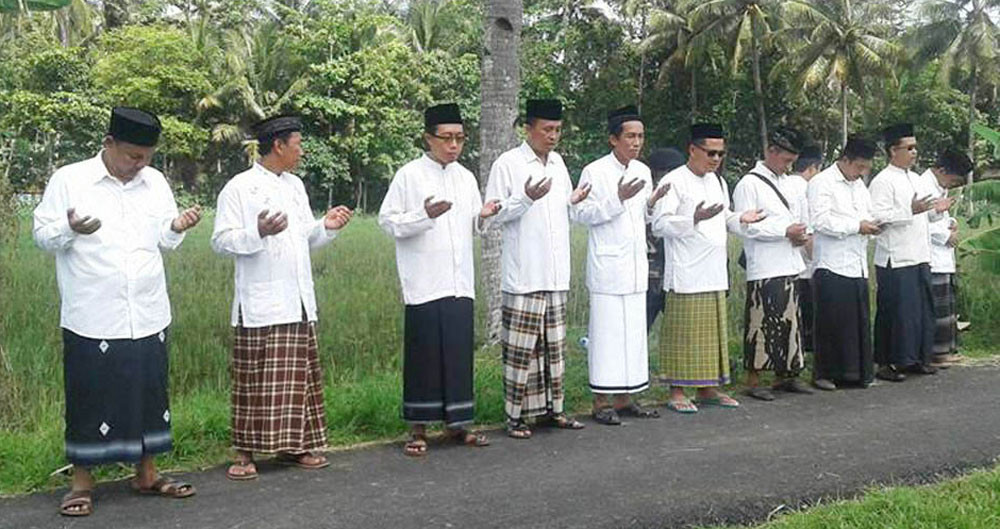Popular Reads
Top Results
Can't find what you're looking for?
View all search resultsPopular Reads
Top Results
Can't find what you're looking for?
View all search resultsBy The Way: A much awaited thrill –– going to work in a sarong
To associate the sarong with a particular religion is a fallacy.
Change text size
Gift Premium Articles
to Anyone
I
n my hometown of Yogyakarta, an ancient region often sneered at as the Javanese center of feudalism, the old-fashioned sarong signifies egalitarianism. There, to associate it with a particular religion, is a fallacy.
In the Javanese culture in which I have been raised and bred, the sarong is among the first fabrics that give the newborn warmth and vigor that enable it to see the light of day.
The baggy tubular fabric is worn by both men and women for practically all occasions and at any time. When circumcised, boys would wear it for its unlimited flexibility. Muslims love to put it on when performing prayers.
As I grew up, I would go around wearing sarong, unbound by any cultural, religious or social orthodoxy.
That was until I moved to various cities and formalities required me to put on this tight, Western-style attire. I had to leave my sarongs stacked in the wardrobe year after year. They attracted cockroaches and wore out from lack of proper care.
Then there came all these turns of events last year that elated sarong-lovers like me.
This development emerged unexpectedly from the tumultuous political situation. Yes, I'm referring to the rise of Ma’ruf Amin, a conservative Muslim leader who stands out for his chic sarong, to the national political scene as the next vice president of the republic.
His emergence in the presidential race has been celebrated by his supporters with a rigorous campaign that aimed to promote the sarong as part of the Indonesian and local Islamic identity to the next level. An avid wearer of sarongs himself, President Joko “Jokowi” Widodo rolled out a plan to designate a day every week when civil servants may appear at work in sarongs.
This proposition is, I’m afraid, a mere political gimmick that Jokowi aimed to please Nahdlatul Ulama, the Muslim mass organization Ma'ruf leads, for their support rather than a genuine will to promote the fashion.
Politics aside, I personally support the reenergized promotion of sarongs, even though I am by no means a fan of neither politician.
So, I have found it entertaining to respond to all the funny reactions from my friends and neighbors alike who wonder why I often appear in a sarong lately. The most memorable moment came when a neighbor jokingly remarked that I had to be going through a midlife crisis.
I just can’t erase this funny feeling that resuming the sarong-wearing game is like embracing a newfound freedom.
You see, no clothing allows liberty greater than the sarong. Its large circumference, anything between 200 and 220 centimeters, gives the wearer the unbridled freedom of aeration movement and dressing style. Disrobing is fast and efficient.
When you want to walk briskly, you can hoick up your sarong for a miniskirt effect. On a breezy day, wearing a sarong is a perfect way of allowing the cool wind to gently blow my loins. Even better, it allows the beholder to wonder if I am going commando.
These are the kinds of liberty that I enjoyed less due to the limited home time as an office worker. At the “modern” workplace, I am fully confined to those stripy shirts and tight pants with metal zippers that pose a threat to my most dear part whenever the need to open and reclose it becomes urgent.
Few probably know that the sarong, in its diverse models, is in the wardrobes of world-famous personalities. During the 1998 World Cup, great footballer David Beckham grabbed global attention when he wore a sarong over his jeans. The legend Mahatma Gandhi was an avid fan, too.
In the Javanese culture, the sarong is laden with symbolism. Its inexpensive materials and simple design signify modesty. Its correct wearing shows propriety; when putting it on too high or too low, you would end up exposing yourself. So wearing a sarong would remind the wearer that it’s important to appear just right.
To associate sarongs with pious Muslims is an unforgivable mistake. In fact, this wonderful fashion item has no religion. In the majority-Christian province of East Nusa Tenggara, they have their own sarongs, and so do people in predominantly Hindu Bali, or in Buddhist Myanmar.
Next time I will go to church in my sarong and see how the congregation may react. And that would be a good time for me to preach about the universality of this cloth. I hope they would sing “amen”.











